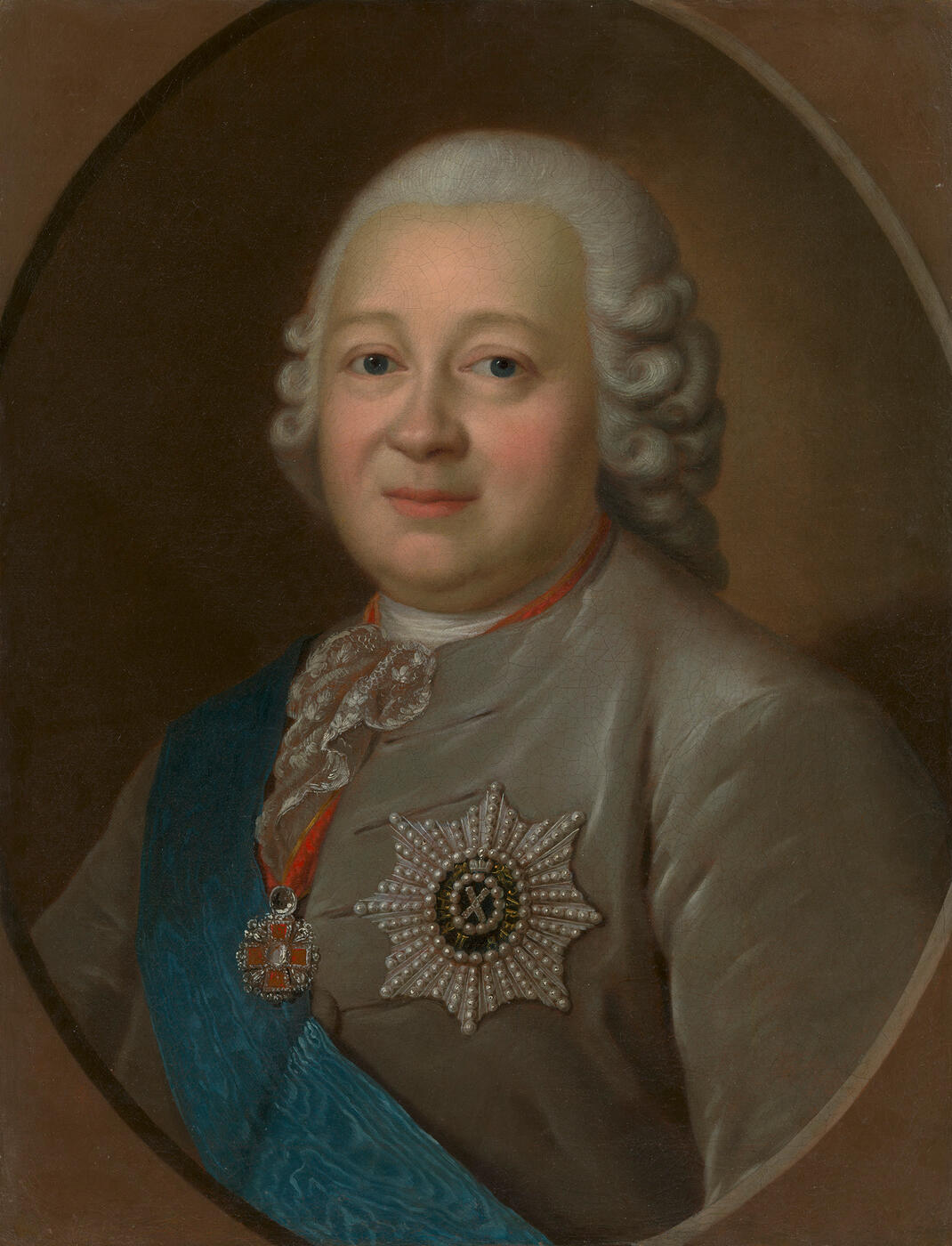5 June 2019 Important Russian Art Auctions, at Asia House
5 June 2019

17. ROKOTOV, FEDOR (C. 1735–1808)
Portrait of Count Nikita Ivanovich Panin .
Oil on canvas, 61.5 by 47.5 cm.
200,000–300,000 GBP
Provenance: Collection of Otto Andrup, Director of the Museum of National History at Frederiksborg Castle, Denmark, from c. 1912 until 1955.
Auction of the Estate of Otto Andrup, Bruun Rasmussen, sale 68, 1955, lot 28.
Collection of Sigvard Skov, Director of Koldinghus Castle Museum, Denmark, from 1955 until 1987.
Private collection, UK.
Authenticity of the work has been confirmed by the expert L. Markina.
Authenticity certificate from the expert E. Ivanova.
Literature: E. Ivanova, E. Rolfe-Smith, A. Berezin, "Portret N.I. Panina v rannem nasledii F.S. Rokotova", Antikvarnyi mir, No. 11, April 2017, pp. 137–151.
The Portrait of Count Nikita Ivanovich Panin from a private collection in the UK was brought into academic discourse by the art historian Ekaterina Ivanova in 2017. The expert Liudmila Markina has suggested that the portrait of Nikita Panin, who was a member of Catherine II’s innermost circle, could have been painted by Fedor Rokotov while he was working, in 1766–1767, on the empress’s coronation portraits, intended for Russian embassies abroad. The State Russian Museum houses a copy of this portrait (inventory No. Zh-60), painted by the “physiognomist” Vasily Yaroslavsky, an artist from the second half of the 18th century.
We are grateful to the art historian Dr Liudmila Markina for providing additional catalogue information.
The Portrait of Count Nikita Ivanovich Panin, painted by Fedor Rokotov during his St Petersburg period, is one of the most outstanding works in his series of intimate portraits. The work was probably commissioned to commemorate a crucial milestone in Panin’s life: on 22 May 1762, he was awarded the Order of St Andrew, the highest order of the Russian Empire, for his 12 years of accomplished diplomatic service, which included the prevention of war with Sweden.
Panin was consistently held in high esteem at the Russian imperial court, and, from 1763 and until his retirement, he was effectively the head of the Collegium of Foreign Affairs. For many years, he was also the tutor to Pavel Petrovich, the son of Catherine II and heir to the throne. The portrait offered here for auction was probably painted in the 1760s or early 1770s, when Rokotov also executed a portrait of the young Tsesarevich. This is probably the reason why the portraits of Pavel Petrovich and his mentor are of similar size and share the same basic composition — an oval shape with a rectangular backing.
Colouristically, the offered portrait is rather restrained, which reflects the intimacy with which the subject is approached. The image of Panin that Rokotov paints has none of the aloof, aristocratic dignity that shines through in another portrait of him by Alexander Roslin (1777, Pushkin State Museum of Fine Arts), as well as in Rokotov’s later version (1777, Primorye State Picture Gallery, Vladivostok). The work is certainly no mere pictorial eulogy: rather than depicting a distinguished statesman, the artist focuses on bringing out in his subject the character traits that his contemporaries valued in him. Panin is portrayed as a charming sybarite, renowned during his life as a gourmand and connoisseur of women, a lazy man with the unhurried disposition. “Count Panin [would die] if he ever hurries,” Catherine II would say in jest.
The portrait has an austere and economical range of colours, based on the combination of a deep brown background and the pearl-grey tones of the jacket, which is decorated only with a lace neckerchief and typical for a ceremonial portrait ribbons and badges, prominent among which here is the pearl-spangled St Andrew’s star. The soft features of the subject’s face, emerging from the dark background, are offset by a slight, tawny chiaroscuro, and the artist’s brushstrokes masterfully convey the plump tenderness of the rosy cheeks and the expressiveness of the lively, intelligent gaze.
In addition to its outstanding artistic features, the Portrait of Count Nikita Ivanovich Panin has a splendid provenance. It comes from the collection of Sigvard Skov, director of the Danish Military Museum, who acquired it in 1955 from Otto Andrup, an eminent European art historian, portrait collector and director of the Danish Museum of National History. Andrup himself may have obtained the portrait directly from the Danish royal family in 1912.
Notes on symbols:
* Indicates 5% Import Duty Charge applies.
Ω Indicates 20% Import Duty Charge applies.
§ Indicates Artist's Resale Right applies.
† Indicates Standard VAT scheme applies, and the rate of 20% VAT will be charged on both hammer price and premium.